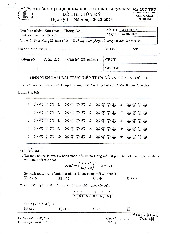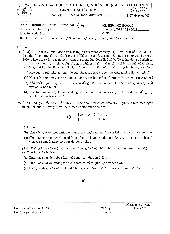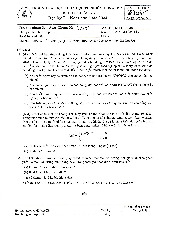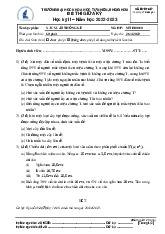






Preview text:
Chapter 3 Amino Acids Matching Questions
Use the following to answer questions 1–10:
Choose the correct answer from the list below. Not all of the answers will be used. Answers may be used more than once. a) L amino acids b) water c) protons d) zwitterions e) arginine f) serine g) tyrosine h) cysteine i) glutamate j) histidine k) proline l) asparagine m) D amino acids 1.
: Chiral type of amino acids found in proteins. Ans: Section: 3.1 2.
: Another name for dipolar molecules. Ans: Section: 3.1 3.
: Disulfide bonds are formed by pairs of this amino acid. Ans: Section: 3.2 4.
: The amino acid with a side-chain pKa just below neutral pH. Ans: Section: 3.2 5.
: The amino acid with a side group that has a terminal carboxamide. Ans: Section: 3.2 6.
: The amino acid with an imidazole side chain. Ans: Section: 3.2 7.
: An amino acid that must be supplied by the diet. Ans: Section: 3.3 Chapter 3 Amino Acids 2 8.
: The amino acid with a negatively charged side chain at neutral pH. Ans: Section: 3.2 9.
: The amino acid with a sulfhydryl side chain. Ans: Section: 3.2 10.
: The amino acid with the abbreviation Ser. Ans: Section: 3.2
Fill-in-the-Blank Questions
11. The amino acid that contains a weakly acidic “phenolic” group is . Ans: Section 3.2 12.
are amino acids with neutral R groups containing an electronegative atom. Ans: Section 3.2
13. The amino acid with the smallest-size side chain allowing greatest flexibility in a protein is . Ans: Section 3.2
14. The charge of glycine when the pH is < 2.0 is . Ans: Section 3.1
15. Between the amino and the carboxyl functional group, the has the lowest affinity for a proton. Ans: Section: 3.1
16. The amino acid with an indol ring is . Ans: Section: 3.2 17.
is an amino acid with a hydrophobic side chain containing a thioether. Ans: Section: 3.2 18. The
group is the functional group that makes an amino acid more reactive than nonpolar
amino acids such as valine, alanine, and phenylalanine. Ans: Section: 3.2
19. The group of amino acids that can be supplied by an organism under a defined condition are the amino acids. Ans: Section: 3.3 20.
is often seen in a child with a protein-deficient diet. Ans: Section: 3.3
Multiple-Choice Questions Chapter 3 Amino Acids 3
21. What charged group(s) is/are present in glycine at a pH of 7? A) –NH + 3 B) –COO C) –NH + 2 D) A and B E) A, B, and C Ans: Section: 3.2
22. At a pH of 12, what charged group(s) is/are present in glycine? A) –NH3+ B) –COO C) –NH2+ D) A and B E) A, B, and C Ans: Section: 3.2
23. In what pH range is zwitterionic alanine the predominate structure? A) 0–2 B) 9–14 C) 8–10 D) 2–4 E) 2–9 Ans: Section 3.2
24. Which amino acids contain reactive aliphatic hydroxyl groups? A) serine and methionine B) serine and threonine C) methionine and threonine D) cysteine and methionine E) cysteine and threonine Ans: B Section: 3.2
25. Name three amino acids that are positively charged at a neutral pH. A) lysine and arginine B) histidine and arginine C) cysteine and arginine D) lysine and proline E) glutamine and histidine Ans: Section: 3.2
26. What would interactions between side chains of aspartate and arginine at neutral pH be? A) hydrophobic B) ionic C) hydrogen bonding D) steric E) covalent Ans: Section: 3.2 Chapter 3 Amino Acids 4
27. Which amino acid has a side chain with a hydroxyl group? A) serine B) alanine C) tryptophan D) histidine E) glutamine Ans: Section: 3.2
28. Which amino acid has a carboxyl group in its side chain? A) glutamine B) galanine C) cysteine D) glutamate E) None of the above. Ans: Section: 3.2
29. What would the overall charge of a peptide of the following peptide sequence at pH 1 be (Asp- Gly-Arg-His)? A) −1 B) 0 C) 1 D) 2 E) 3 Ans: Section: 3.2
30. Which of the following amino acids would most likely be soluble in a nonpolar solvent such as benzene? A) valine B) histidine C) glutamine D) glycine E) All of the above. Ans: Section: 3.2
31. Below is a list of five tripeptides identified by their single letter codes. They are listed as A, B,
C, D, and E. Which tripeptide contains an amino acid capable of forming covalent disulfide bonds? A) FNC B) RGK C) VIL D) MDE E) SYT Ans: Section: 3.2 Chapter 3 Amino Acids 5
32. Below is a list of five tripeptides identified by their single letter codes. They are listed as A, B,
C, D, and E. Which tripeptide is negatively charged at physiological pH? A) FNC B) RGK C) VIL D) MDE E) SYT Ans: Section: 3.2
33. Below is a list of five tripeptides identified by their single letter codes. They are listed as A, B,
C, D, and E. Which tripeptide has the most polar side chains? A) FNC B) RGK C) VIL D) MDE E) SYT Ans: Section: 3.2
34. Where are Trp and Phe found in a globular protein and why?
A) exterior due to the hydrophilic effect
B) interior due to the hydrophobic effect
C) exterior forming polar H-bonds with water
D) interior forming ionic bonds with other amino acids
E) exterior forming ionic-polar bonds with water Ans: Section: 3.2
35. Amino acids contain all of the following functional groups except: A) indole. B) thioester. C) phenyl. D) sulfhydryl. E) amine. Ans: Section: 3.2 Short-Answer Questions
36. What is the advantage of having multiple functional groups in proteins?
Ans: The rich diversity of functional groups in proteins can contribute independently to protein
structure and accounts for the diversity in function as well. Section: Introduction
37. What is the advantage of protein interaction and assembly with other proteins?
Ans: When proteins interact or assemble, new functions and specificity become available.
These protein interactions provide multifunctional activity and specificity. Section: Introduction
38. Draw the general structure of an amino acid at pH 7.0 with the side group shown as an “R.”
Ans: The figure should look like either one of the structures shown in the left margin on p. 38. Section: 3.1 Chapter 3 Amino Acids 6
39. Why is the central carbon on an amino acid so important?
Ans: This is the chiral center of the molecule and is linked to each important functional group of an amino acid. Section: 3.1
40. Draw the structure of alanine, aspartic acid, and histidine when the pH is 1.0, 7.0, and 12.0.
Ans: Use the figures in your book and the pKa for each functional group to determine the
ionization state for each amino acid. Section: 3.2
41. What is the net charge of each the following amino acid: alanine, aspartic acid, and histidine
when the pH is 1.0, 7.0, and 12.0?
Ans: For alanine, the charges are: 1, 0, and −1. For aspartic acid, the charges are: 1, −1, and −2.
For histidine, the charges are: 2, 0, and −1. Section: 3.2
42. A gene is mutated so the amino acids glycine and glutamate are now alanine and leucine,
respectively. What are the potential results of each of these mutations? Assume that the
mutations are not near each other in the primary sequence and have no impact on the other.
Ans: The glycine-to-alanine mutations are similar and will have little or no effect. Glutamate
and leucine have very different chemistries and will impact the function and structure of
the protein, as one is charged and water soluble, and the other is hydrophobic and nonpolar. Section: 3.2
43. What are the four ways amino acids can be classified?
Ans: hydrophobic, polar, positively charged, and negatively charged Section: 3.2
44. What are the three aromatic amino acids?
Ans: phenylalanine, tyrosine, and tryptophan Section: 3.2
45. Which amino acid side chains are capable of ionization?
Ans: The amino acids are aspartate, glutamate, histidine, cysteine, tyrosine, lysine, and arginine. Section: 3.2
46. Which are the branched amino acids, and what impact do they have on protein shape?
Ans: These are the aliphatic, hydrophobic amino acids, valine, leucine, and isoleucine. They
are hydrophobic, which drives the hydrophobic interactions in the interior of a protein.
These are also bulky amino acids that will lend to steric strain if forced close to each other in a peptide. Section: 3.2
47. Draw a titration curve for glycine.
Ans: Use the information from Section 2.5 and the graph from Figure 3.2. Section: 3.2 Chapter 3 Amino Acids 7
48. What do serine, threonine, and tyrosine have in common?
Ans: Each has a hydroxyl (–OH) group, which makes the first two amino acids more water
soluble and increases the reactivity of all three amino acids. Section: 3.2
49. Which amino acid is responsible for stabilizing the structure of a protein by forming pairs of sulfhydryl groups? Ans: cysteine Section: 3.2
50. What functions make histadine an important amino acid?
Ans: The pKa of the imidazole ring is near physiological pH. This means that the side group
may be charged and protonated or neutral and deprotonated. This results in an amino acid
that can either lend or accept a proton or charge in the active site of an enzyme. Section: 3.2
51. Which amino acids have a side chain that includes a modified carboxyl group, carboxaminde? Ans: asparagine and glutamine Section: 3.2
52. Which ionizable group has the lowest affinity for protons: the terminal -carboxyl group, the
aspartic acid side group, or the terminal -amino group?
Ans: the terminal -carboxyl group Section: 3.2
53. Malnourished children with Kwashiorkor display a distended stomach, giving the illusion of
being full. Why does this happen?
Ans: This is a nutritional state where there is an extremely low or poor protein intake in the
diet. The osmolar shift of the blood, which is poor in protein content, causes water to flow into the tissues. Section: 3.3
54. What is the difference between nonessential and essential amino acids?
Ans: The former are amino acids that humans can generate de novo, or from scratch. The latter
cannot be made and must be ingested for the mature formation of proteins. Section: 3.3
55. List the essential amino acids.
Ans: histadine, isoleucine, leucine, lysine, methionine, phenylalanine, threonine, tryptophan, and valine Section: 3.3
Document Outline
- Matching Questions
- Fill-in-the-Blank Questions
- Multiple-Choice Questions
- Short-Answer Questions




